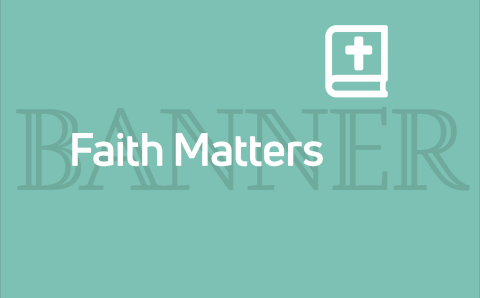For thousands of years, people all over the world have celebrated harvesttime. You’d celebrate too if you had to raise all your own food—it’s a LOT harder than it sounds!
Here’s what you’d have to do:
- Figure out how much food you’ll need for a whole year
- Plant your crops
- Weed and water the plants as they grow
- Raise (and slaughter) animals for meat
- Harvest the crops (by hand—machines haven’t been invented yet)
- Store the food properly so it won’t spoil (no refrigerators!)
- Eat carefully all winter so you won’t run out of food
- Save seeds from this year’s crop to plant next year
Even if you worked very hard to raise your food, things could still go wrong. Hail can destroy a crop in minutes. Plants and animals can get diseases. If you get too much rain (or not enough), the crops won’t grow well. If your family gets sick right before harvesttime, your crops might rot in the fields unless you have neighbors to help you.
Do you see why people all over the world give thanks at harvesttime? A good harvest means that so many things have gone well. And it means that people will be able to stay alive until the next harvest. That’s something to be thankful for!
To learn more about harvest festivals around the world, check out www.familyculture.com/holidays/harvestcelebrations.htm.
Read All About It
Check out the picture book Giving Thanks: The 1621 Harvest Festival by Kate Waters. In this book a Wampanoag boy named Dancing Moccasins and an English boy named Resolved White tell about the preparations leading up to the harvest celebration that we now think of as the first Thanksgiving. As Dancing Moccasins hunts deer and Resolved does his chores, they both wonder what the day will hold for them. Will they be safe? Will they like each other? Find out!
Name That Pilgrim
How would you like it if your parents named you “Wrestling” or “Humility”? Some Pilgrim parents gave their children first names that would remind them of important things. At the first Thanksgiving there were kids named Remember, Love, Wrestling,
Humility, Resolved, and Peregrine. The baby who was born on the Mayflower was named Oceanus.
Fun Facts
The Pilgrims sailed for 66 days from England to America on a ship called the Mayflower. Only two people died on the stormy journey, and one baby was born, but half of the 100-some Mayflower passengers died of sickness during their first winter in America.
During a terrible storm a Mayflower passenger named John Howland was washed off the ship’s deck. But before he went into the ocean, he caught hold of something and was saved. If he had drowned that day, U.S. President George W. Bush would never have existed, because he is a descendent of John Howland.
The area called “Plymouth Colony”wasn’t empty when the Pilgrims arrived. A Native American tribe called the Wampanoag had been living there for thousands of years. Though the Pilgrims and the Wampanoag were friends for many years, they later fought each other and most of the Wampanoag were killed.
The Pilgrims celebrated Thanksgiving only once that we know of. In 1863 President Abraham Lincoln declared Thanksgiving Day a U.S. holiday.
Make a “ Thankful Calendar”
At the beginning of the month, hang a blank calendar page on your refrigerator with magnets. (Make your own calendar page and decorate it with things that remind you of harvesttime.) Every day, write down something big or little that you’re thankful to God for. Get your whole family to do this, and take turns reading the calendar to each other on Thanksgiving Day. Talk about what it was like to give thanks every day for a whole month.
The Very First Thanksgiving
Did you know that the first Thanksgiving celebration in North America actually happened in Canada?
More than 400 years ago Martin Frobisher, an English explorer and part-time pirate, had a dream. He wanted to find a direct sea route from Europe to Asia. Because Europeans hadn’t traveled west across the Atlantic Ocean much, he didn’t know that his dream was impossible. So off he sailed, but when he found land it wasn’t Asia—it was Canada.
In 1578, Frobisher started a settlement in what’s now called Newfoundland. He was so glad he had survived the long journey that he held a ceremony to give thanks to God.
Many Canadians continued celebrating Thanksgiving off and on through the years, but Thanksgiving didn’t become an official holiday in Canada until 1879.
The First U.S. Thanksgiving
On December 11, 1621, an Englishman named Edward Winslow wrote a letter from his new home in Plymouth Colony to his family back in England. He described the celebration Americans now think of as the first Thanksgiving. The letter went something like this:
My dear family,
We had a very good corn harvest this year, praise God! (Our barley was all right, but we did a really bad job with the peas--we planted them too late, and the summer sun burned them to a crisp.)
After we harvested our crops, we wanted to celebrate. We had enough food to get us through the winter!
Our governor sent out four men to hunt for ducks, geese, or turkey. The hunters brought back so many birds that we had food for a whole week.
We celebrated our harvest for three whole days. Many of our Indian neighbors came to join us, including their greatest chief, whose name was Massasoit. Our friends the Indians killed five deer and gave them to our leaders.
By the goodness of God, we have plenty of food this year, and for that we are very thankful.
With much love,
Edward
Aadapted from Mourt’s Relation: A Journal of
the Pilgrims at Plymouth, first published in 1622.




